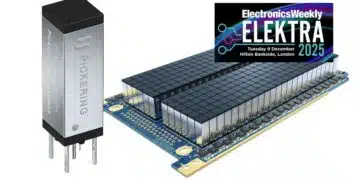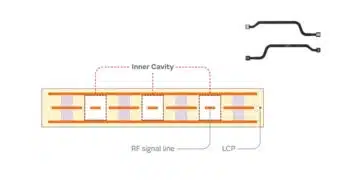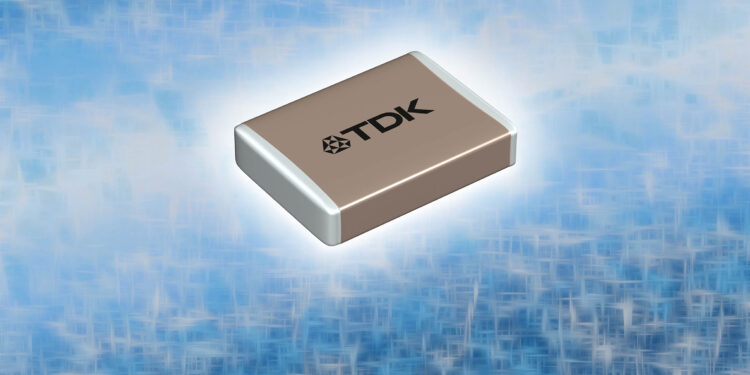TDK Corporation has expanded its tried-and-tested range of CeraLink® anti-ferroelectric ceramic capacitors. Previously, only large, ready-to-fit sizes were available. Now, smaller compact types with the classic chip design are included in the portfolio in order to increase the areas of application.
The new portfolio starts with the EIA 2220 size, measuring 5.7 x 5 x 1.4 mm, is intended for 500 V, and offers a capacitance of 250 nF with very low parasitic coefficients. The new capacitors with the ordering code B58043* are available with both standard and soft termination. TDK will add further designs and voltage classes in the future.
At room temperature, the ESR at 1 MHz is only 40 mΩ, and the ESL is 3 nH, with the values even lower at higher temperatures. A high current capability of up to 9 ARMS is achieved at 200 kHz and 25 °C ambient temperature. The permissible temperature range lies between -40 °C and +150 °C.
Typical applications use the smaller designs in either snubber or output capacitors. Due to its smaller dimensions, the new CeraLink SMD variant can be placed even closer to fast-switching power semiconductors like IGBT modules, SiC-based or GaN-based semiconductors. Alongside the low ESL values, the lead inductance is kept very low.
CeraLink capacitors are based on PLZT ceramics (lead lanthanum zirconate titanate). In contrast to conventional ceramic capacitors, their maximum capacitance is at operating voltage and even increases as the proportion of the ripple voltage increases. The knowledge blog offers more explanation on the properties of ceramic and anti-ferroelectric capacitors.
Features
- Compact dimensions of just 5.7 x 5 x 1.4 mm (EIA 2220)
- Low ESR of just 40 mΩ at room temperature
- Low ESL of just 3 nH
- High current capability of up to 9 ARMS at 200 kHz, 25 °C
Applications
- Snubber connection of fast-switching power semiconductors
- Output capacitor
































